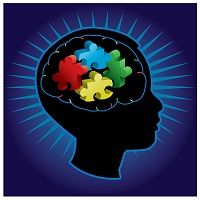Article
The Changing Criteria for Autism Spectrum Disorder: What They Mean for Practice
Author(s):
With prevalence rates for autism spectrum disorder higher than previously estimated, clinicians should be aware of recent changes in diagnostic definitions and criteria for autism spectrum disorder.

An estimate of the prevalence of autism spectrum disorder (ASD) recently published by the Centers for Disease Control and Prevention (CDC) concluded that rates of ASDs are roughly 30% higher than previous estimates. These new data (from 2010) put the figure at 1 in 68 children age 8 years (or 14.7 per 1000), compared with the 2012 published estimate of 1 in 88 children (11.3 per 1000).
At the 2014 AAP National Conference & Exhibition in San Diego, CA, Susan L. Hyman, MD, FAAP, Professor of Pediatrics, Neurodevelopmental & Behavioral Pediatrics, University of Rochester Medical Center, Rochester, NY, gave an overview of the current status of the diagnosis of autism spectrum disorders in a plenary session.
She began with the CDC report, which was based on surveillance data from 14 US states. Almost half of children diagnosed with ASD were reported to have typical cognitive abilities; 31% with data had intellectual disabilities and 23% borderline skills. There was a marked variability in prevalence with a high of 21.9% in New Jersey and a low of 5.7/1000 in Alabama.
White children were 30% more likely to be identified with ASD than black children and were almost 50% more likely to be identified with ASD than Hispanic children. The different rates of diagnosis may reflect disparities in access to healthcare and education resources. The mean age of diagnosis was 53 months of age.
Hyman said that screening for ASD is still recommended at 18 and 24 months of age, in addition to ongoing surveillance. However, a new scoring system was published for the Modified Checklist for Autism in Toddlers (MCHAT-R/F) in 2014, incorporating a 20-item questionnaire.
The latest version of the Diagnostic and Statistical Manual of Mental Disorders (DSM-5) was published in May 2013. The previous main version, DSM-IV, was released in 1994. Thus, the DSM-5 was built on the knowledge gained in the intervening two decades. Hyman reviewed the significant changes from DSM-IV to DSM-5 with respect to autism and related disorders.
A fundamental difference between the two versions is that DSM-IV conceptualized a “continuum” of symptoms and defined the term “Pervasive Developmental Disorders” (PDD), comprising five diagnostic categories: Autistic Disorder, Asperger Syndrome, Rett Disorder, Childhood Disintegrative Disorder, and PDD not otherwise specified (PDD-NOS).
In contrast, DSM-5 replaces this continuum with a single diagnostic category of Autism Spectrum Disorder. There are also changes in the way symptoms are grouped and categorized. Furthermore, the DSM-5 modification includes Social Communication Disorder and allows for the diagnosis of comorbid conditions.
Hyman described how DSM-5 diagnosis is based on deficits in social communication and interaction across contexts (not accounted for by developmental delays), and on restricted and repetitive behaviors. DSM-5 criteria would be met by 81% of the children identified for inclusion in the MMWR 2014 study, which used case definitions based on DSM-IV-TR, an update (Text Revision) of DSM-IV published in 2000 and the last iteration prior to DSM-5.
The differential diagnosis of ASD requires consideration of alternative disorders with overlapping symptoms, such as ADHD, Anxiety Disorders, Tourette Syndrome, OCD, etc. An etiologic evaluation is important with work-up individualized per patient history, family history, and examination. Some 10-20% of children with ASD will have findings on Chromosomal Microarray testing.
Hyman mentioned the Primary Care Act of 2014, which focuses on the Medical Home for Coordinated Care with provisions for screening, early diagnosis, and referral for effective treatment, including the identification and management of comorbid medical conditions. In addition, she reported that, as of August 2014, 37 states had enacted autism insurance legislation.
Hyman concluded by listing a few of the many resources available to support the caregivers of children and youth with Autistic Spectrum Disorder.





